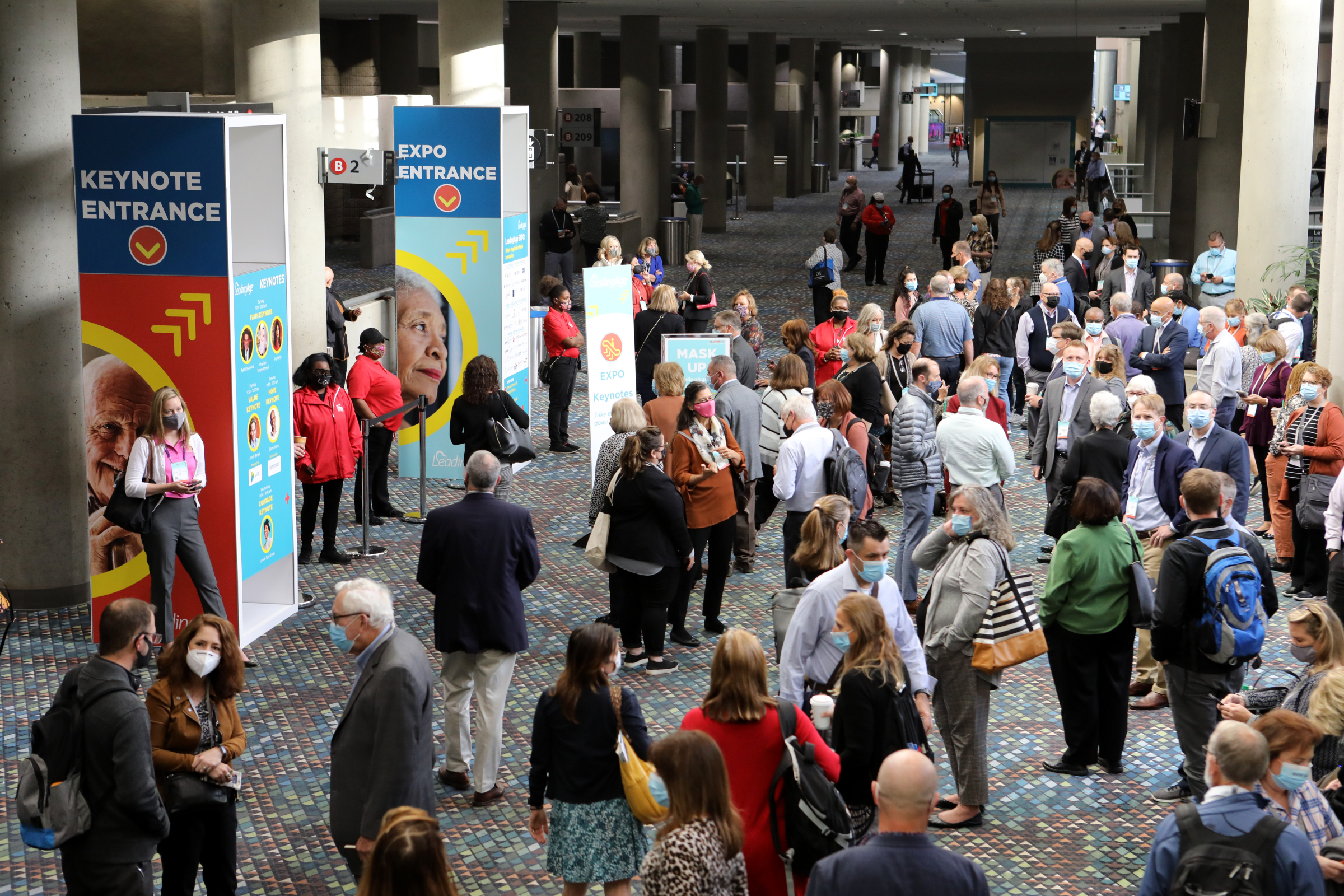HUD Reforming REAC Physical Inspection Process
[* NOTE: UPDATES as of 4/10/19 TO THE ORIGINAL ARTICLE DATED 2/25/19 are indicated below with an asterisk]
HUD Reexamines the Way It Conducts Physical Inspections
A demonstration to test out new ways of collecting information about and inspecting the condition of most properties in Region 3* is expected to begin later this year. However, outside of a new 14 day notice policy, and *new guidance issued to inspectors to collect data on the presence, absence and operational status of any available carbon monoxide detectors, REAC inspections will continue according to the current UPCS inspection protocol in the bulk of the country this year and likely next. HUD is conducting a series of listening sessions, including a call-in specifically for LeadingAge members, to collect feedback and suggestions about the changes. *The remote participation listening session opportunity for members has been set for Monday, April 29 at 2 pm eastern.
HUD Announces New 14-day Notification Policy
On February 20, HUD announced the standardization of shortened timeframes between inspection notification and actual inspection dates. Expectations in the short term are that this will help prevent such owners as persistently do only “just in time” repairs prior to inspections from being able to continue such practices.
The new policy is to provide owners with no more than 14 days in which to notify residents and have contracted inspectors onsite to do the inspection. If the initial date is declined, refused or canceled for any reason, a score of zero will be recorded – and only an inspection scheduled within the following 7 days will allow the site to avoid the zero score becoming permanent. This practice is to begin 30 days after the formal notice, which was issued on February 27 (but backdated to February 22) is published, and new inspection contracts are awarded. [* Subsequent details regarding inspection scheduling and notification can be found in an April 9 article providing recent developments and more details on the new physical inspection process and related HUD policies.]
Previously awarded inspection contracts are still to be scheduled subject to a mutually agreed upon date.
HUD Seeks Stakeholder Feedback, Including Call with LeadingAge Members
At the same time HUD announced the notification changes, a series of in-person only listening sessions were announced for Philadelphia, Fort Worth, Detroit, Seattle and Atlanta, and subsequently, a link was provided to find dates and times. LeadingAge has requested and D.J. Lavoy, Director of REAC, has agreed to participate in a conference call with LeadingAge members. [* This remote participation opportunity has been scheduled for Monday April 29 at 2 pm Eastern. Details and registration information is being sent out over the housing operations and policy listserv.]
Highlights of a REAC Listening Session
Following are details from the first of the formal listening session in Philadelphia, Feb 21, 2019, as adapted from the slides used that day.
The Problem
While a significant majority of HUD and HUD-assisted properties are safe and in a quality condition, a new inspection model is needed to expediently address properties that are not.
According to HUD, reasons for a wholesale review of the inspection process include:
- Current UPCS inspections do not always identify the extent of health and safety conditions affecting residents.
- Properties can pass inspection even with poor unit condition.
- Scoring model no longer aligns with expectations about housing quality.
- Some owners wait to prepare for scheduled inspections, rather than performing year-round maintenance.
- Deficiencies are not all Critical to Quality (CTQ).
For example, units only garner 35% of the total points on an inspection under the current UPCS model. HUD has found that some bad actors that focus solely on the big-ticket, building. systems and/or exterior appearances can leave residents living in squalor, with infestations and mold that can be very damaging to their health, can still technically pass their inspections. One example shared was of a property that got a score of 84, but was quite horrendous at the unit level, according to HUD staff in the room who attested to having personally visited the site.
An Inspection Task Force was created with the mission to conduct a wholesale reexamination of REAC inspections, placing the greatest emphasis on eliminating health and safety hazards, then focusing on functionality, and lastly on condition. HUD wants to ensure that all owners adopt sound maintenance practices year-round, so part of the demo (still being crafted) will be to explore ways to collect information on work orders generated by owners as they perform their already-mandated annual inspections. In the short term, the demo will look to create a template or software that owners in Region 3 can use to submit their own self-inspections
Goals of the Demonstration
The desired outcome of the new inspection model is inspections that protect families and reflect the property’s true physical condition.
Inspection Improvements Take a Two-Prong Approach
HUD intends to “strengthen current standards, scoring models and protocols used to assess properties” and implement stricter enforcement protocols against owners who are not meeting standards.
Changes to the Current Process
The 14-day notice before inspection already released and a yet-to-come mandate* to have carbon monoxide detectors in all units with fuel-burning devices will apply to all sites in the nation. Otherwise, REAC inspections will continue under the current UPCS inspection protocol in the bulk of the country this year. [* UPDATE: On March 25, HUD issued guidance to inspectors to collect data on the presence, absence and operational status of any available carbon monoxide detectors, but indicated that this would be for information purposes only, not impacting scores. No requirement has so far been made of owner/operators to install carbon monoxide detectors.]
Beginning 30 days after publication of a signed and numbered notice, HUD employees and contract inspectors acting on behalf of HUD shall provide property owners and their agents 14 calendar days of notice prior to their inspection. If an owner/agent declines, cancels or refuses entry for an inspection, a presumptive score of “0” (zero) will be recorded. If the second attempt results in a successful inspection within seven calendar days, the resulting score will be recorded.
New Model
New standards, protocols, and processes will first be developed and tested for the bulk of Region 3 sites (PA, MD, DC, DE, VA – but not WV) over the next two years.
The earliest phase is expected to comprise a new POA self-inspection (expected to begin in the 3rd quarter of FY19) then a new form of third-party inspection of components central to quality, neither of which will be scored or in any way used to negatively impact the property. The goal here is full engagement of all stakeholders to figure out a new model that works, is reliable, and protects resident health and safety. Then, starting sometime in FY20, a scoring model will be developed, tested, evaluated and refined before it can be rolled out to the rest of the country.
For properties in these Region 3 states, except those found to be in truly deplorable condition and needing to follow existing inspection protocols to initiate enforcement action, REAC UPCS inspections will not be done for a period of two years.
Insights into the New Model
The new inspection model is intended to be more resident-focused, and less complex. The current levels of deficiencies are expected to be replaced by three new categories of deficiencies: safety and health; function and operability; and condition and appearance. The current five inspectable areas will be consolidated into three: unit, inside (building systems and common areas) and outside (building exterior and site).
During this year to 2 year timeframe of new inspection model development and testing, stakeholder identification of current inspection protocol components with scoring that results in absurdly high point losses is encouraged. So, even if your site is not part of the demo, your feedback is critical.
Things like visible rust on a water heater (currently a Level 1 deficiency) will be eliminated, as it has no resident impact, but something like a misaligned exhaust system which is critical to quality and can cause death due to carbon monoxide will be elevated.
Check out here the slides used in the presentation Improving Real Estate Assessment Center’s (REAC) Inspections: A Presentation to HUD’s Inspections Partners in Philadelphia, PA .
Providing Feedback Strongly Encouraged
Sharing your thoughts concerning disproportional impacts of current scoring is very important. HUD will be posting more information on how to submit feedback directly to HUD. Throughout this process, however, member communication with LeadingAge staff is also strongly encouraged so that we can be informed of your experiences and advocate on your behalf. Please contact Colleen Bloom to share your stories.

Most Recommended
November 08, 2024
 HOTMA: New Rules for Housing
HOTMA: New Rules for Housing
November 06, 2024
 Colleagues on the Move, November 6, 2024
Colleagues on the Move, November 6, 2024
November 06, 2024
 Analysis: What Does the Final CY2025 Home Health Rule Include?
Analysis: What Does the Final CY2025 Home Health Rule Include?
October 29, 2024
Katie Smith Sloan Urges Members to Build a Movement, Take Action
Recently Added
December 04, 2024
Second OIG Infection Preventionist Compliance Report Released
December 04, 2024
 Colleagues on the Move, December 4, 2024
Colleagues on the Move, December 4, 2024
November 27, 2024



